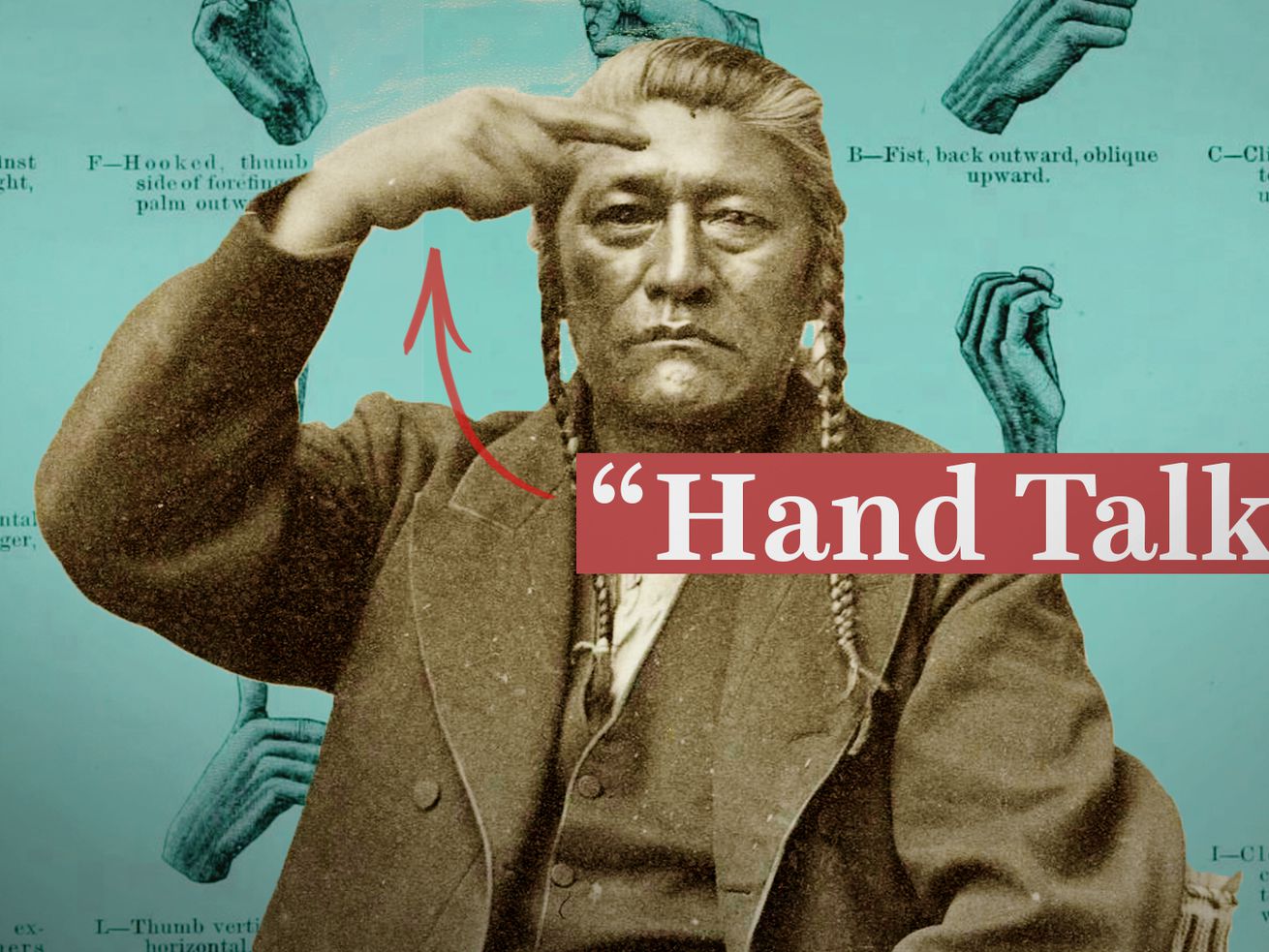A North American lingua franca.
Centuries before we had American Sign Language, Native sign languages, broadly known as “Hand Talk,” were thriving across North America. Hand Talk would be influential in the formation of American Sign Language, but it has largely been written out of history.
One of these Hand Talk variations, Plains Indian Sign Language, was used so widely across the Great Plains that it became a lingua franca — a universal language used by both d/Deaf and hearing people to communicate among tribes that didn’t share a common spoken language. At one point, tens of thousands of Indigenous people used Plains Indian Sign Language, or PISL, for everything from trade to hunting, conflict, storytelling, and rituals.
But by the late 1800s, the federal government began to implement a policy that would change the course of Indigenous history forever: a boarding school program designed to forcibly assimilate Indigenous children into white American culture — a dark history that we’re still learning more about to this day.
Because of a forced “English-only” policy, the boarding school era is one of the main reasons the country lost so many Native signers — along with the eventual dominance of ASL in schools for the d/Deaf.
Today, there are just a handful of fluent PISL signers left in the US. In the piece above, we hear from two of these signers, Melanie McKay-Cody and Lanny Real Bird, who have dedicated their lives to studying and revitalizing the language. They show us PISL in action and help us explore how this ancient language holds centuries of Indigenous history.
This video is part of our award-winning series, Missing Chapter, now in its third season. You can watch more Missing Chapter episodes in this playlist.
You can find the entire library of Vox’s videos on our YouTube channel.
Author: Ranjani Chakraborty
Read More



